Luther College Associate Professor Beth Lynch shares her knowledge and photographs of a native vine related to cultivated squashes, gourds, and cucumbers. -promoted by desmoinesdem
In August I received a phone call from a woman I did not know asking about a plant. It turned out that she was sitting in my friend Phil’s kitchen, having just made the drive from the Twin Cities to Decorah. On the drive, she had seen massive mounds of a flowering vine clinging to trees and shrubs along the roadside and was sure it must be the first wave of an invasion.
In fact, what she and many others noticed this summer was the exuberant growth of the native wild cucumber (Echinocystis lobata). This plant is native to eastern North America, but for some reason people seemed to really take note of it this year. It has likely become more common because it is well suited to nutrient-rich, disturbed landscapes created by humans.
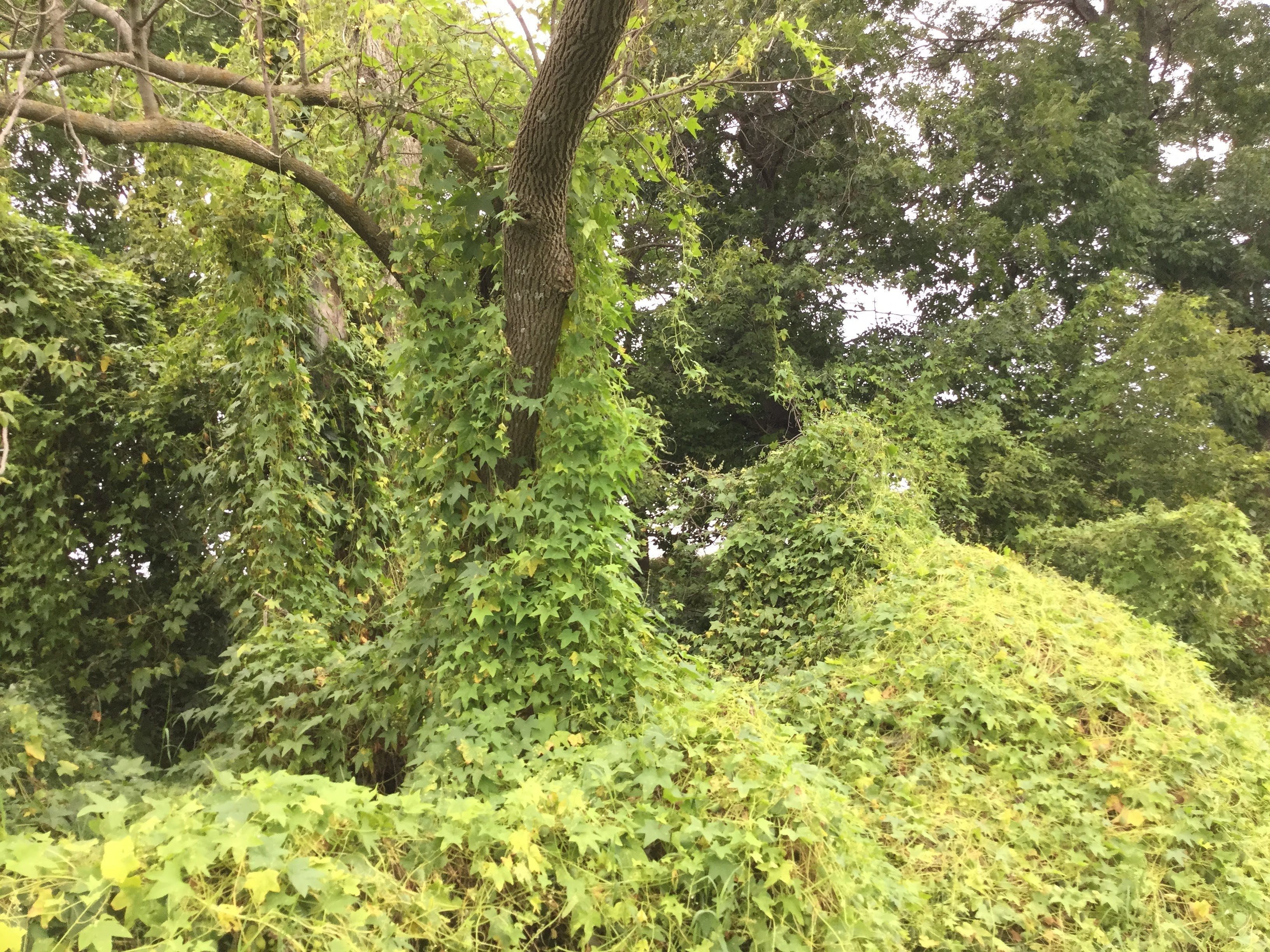
Wild cucumber is an annual vine related to squashes, gourds, and cucumbers cultivated in our gardens. It is particularly well-adapted to sunny openings in rich soils along forest edges and rivers. Each year a new plant germinates from a large white and brown speckled seed, grows into a sprawling vine 30-50 feet tall, and then dies by the end of October. It has beautiful five-lobed leaves that resemble stars, and delicate tendrils that help it climb over everything — fences, trees, bushes, old cars.
When wild cucumber blooms, the vines are covered with spikes of delicate white flowers. The flowers are what makes the plants so conspicuous at highway speeds. If you take a very close look at the flowers, you can see that most of them are male flowers, containing only petals and anthers, but no pistil. There are fewer female flowers, and they are placed closer to the stem; their most conspicuous feature is their tiny, very spiny ovaries.
The spiny ovaries will be no surprise if you have already spotted the developing fruits, which look like a kiwi fruit crossed with a sea urchin. Picture a green oblong fruit with very long spines.
Later on in the summer the fruits become dry and mostly hollow. I imagine that if a fruit were to fall into a stream or river it could float along with the current and be dispersed quite far. However, most of the seeds will just drop to the ground and start a new plant in the same spot next year. In early November, all that remains of the past summer’s lush mounds of wild cucumber are wispy vines with a few dried husks of fruits still hanging on.
So, to those who noticed this plant for the first time this year, the good news is that the conspicuous masses of wild cucumber vines have been here in North America since before the ice ages. They are probably not the front wave of a green invasion that will smother all of the trees in our area (though it is a nasty invasive weed in Europe), however it may be benefiting from our increasingly human-dominated landscapes.

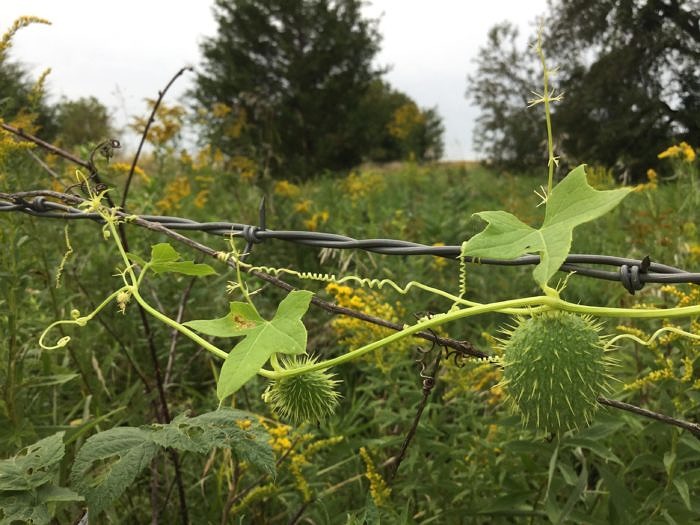
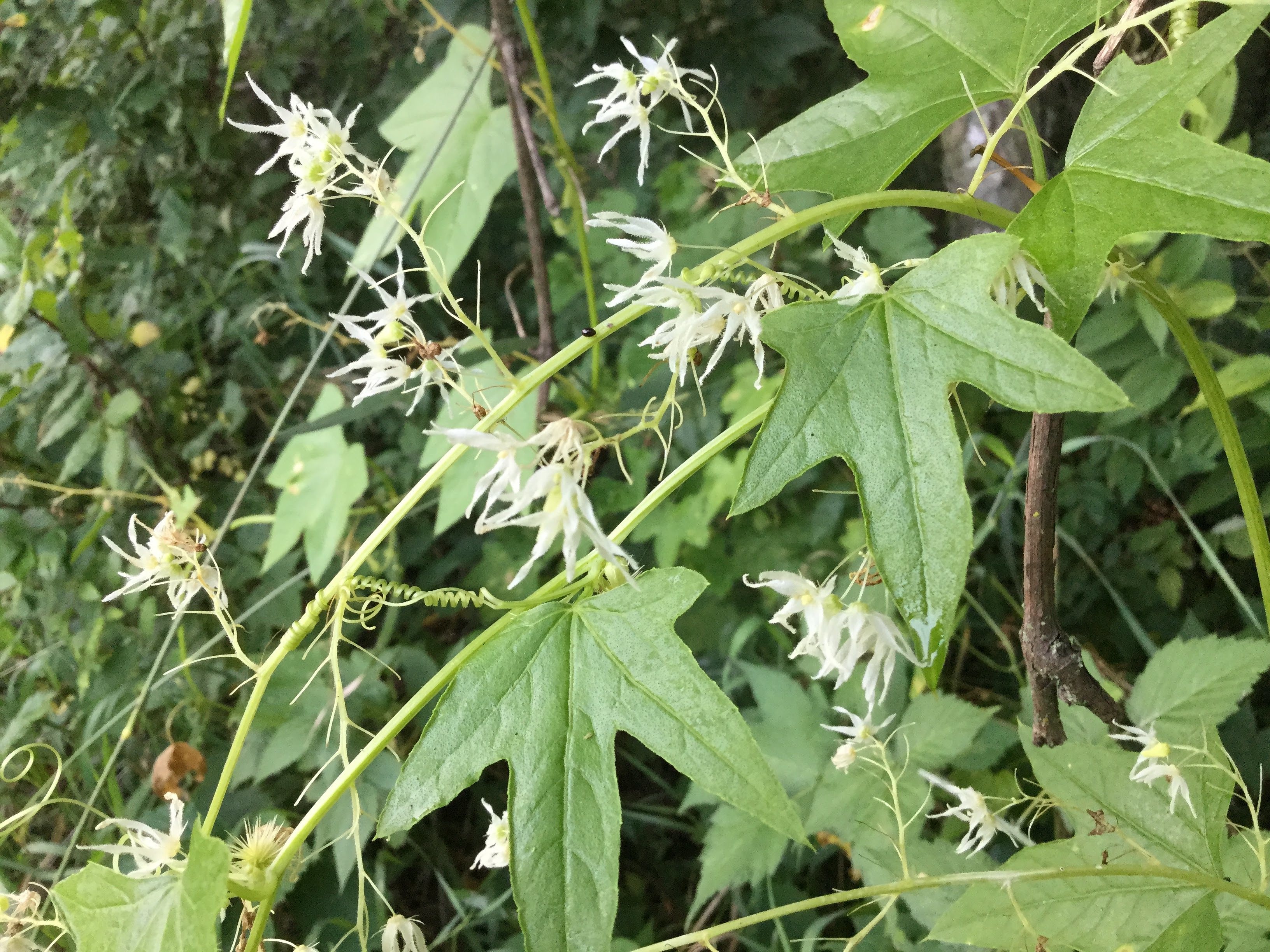
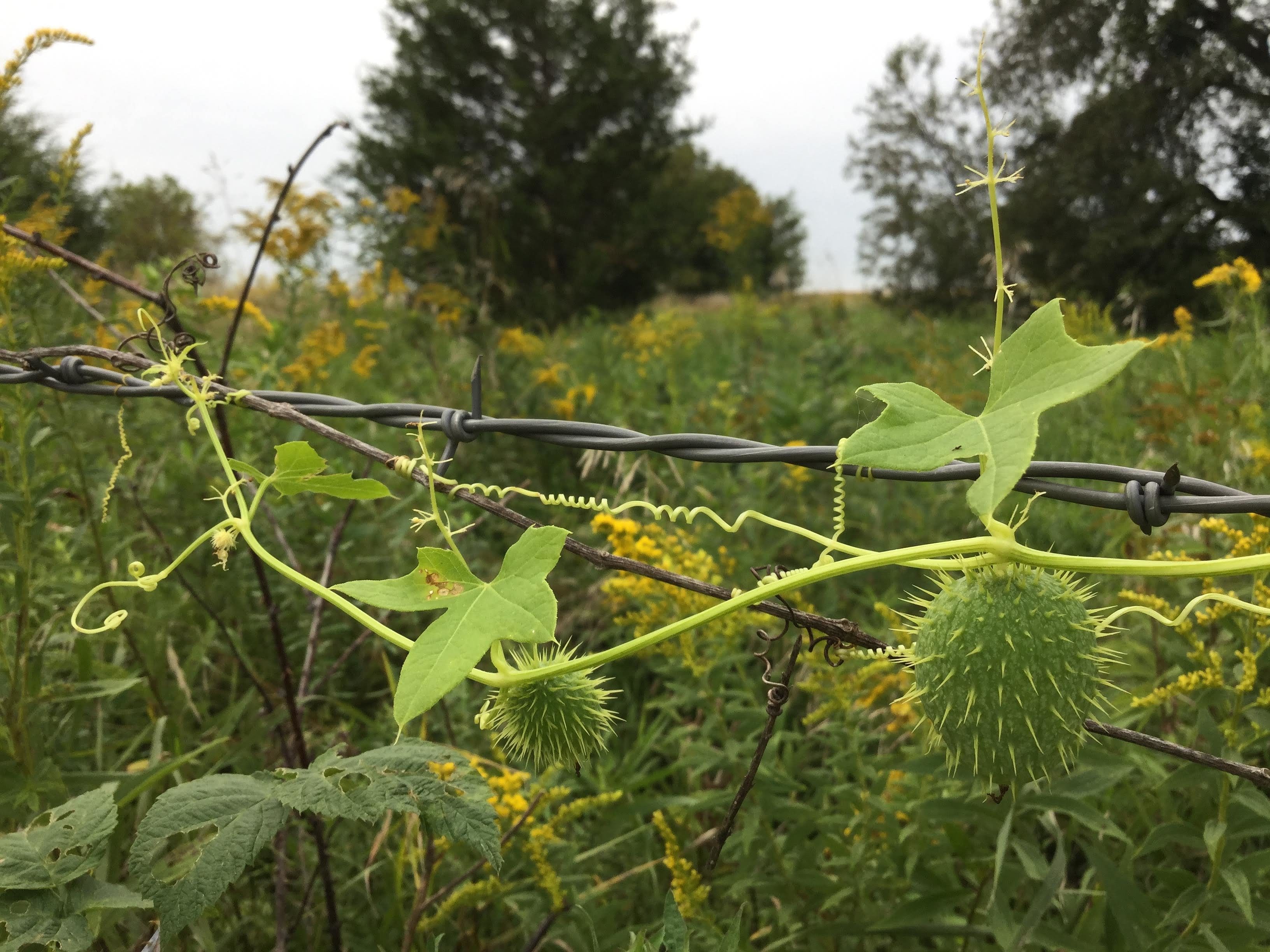
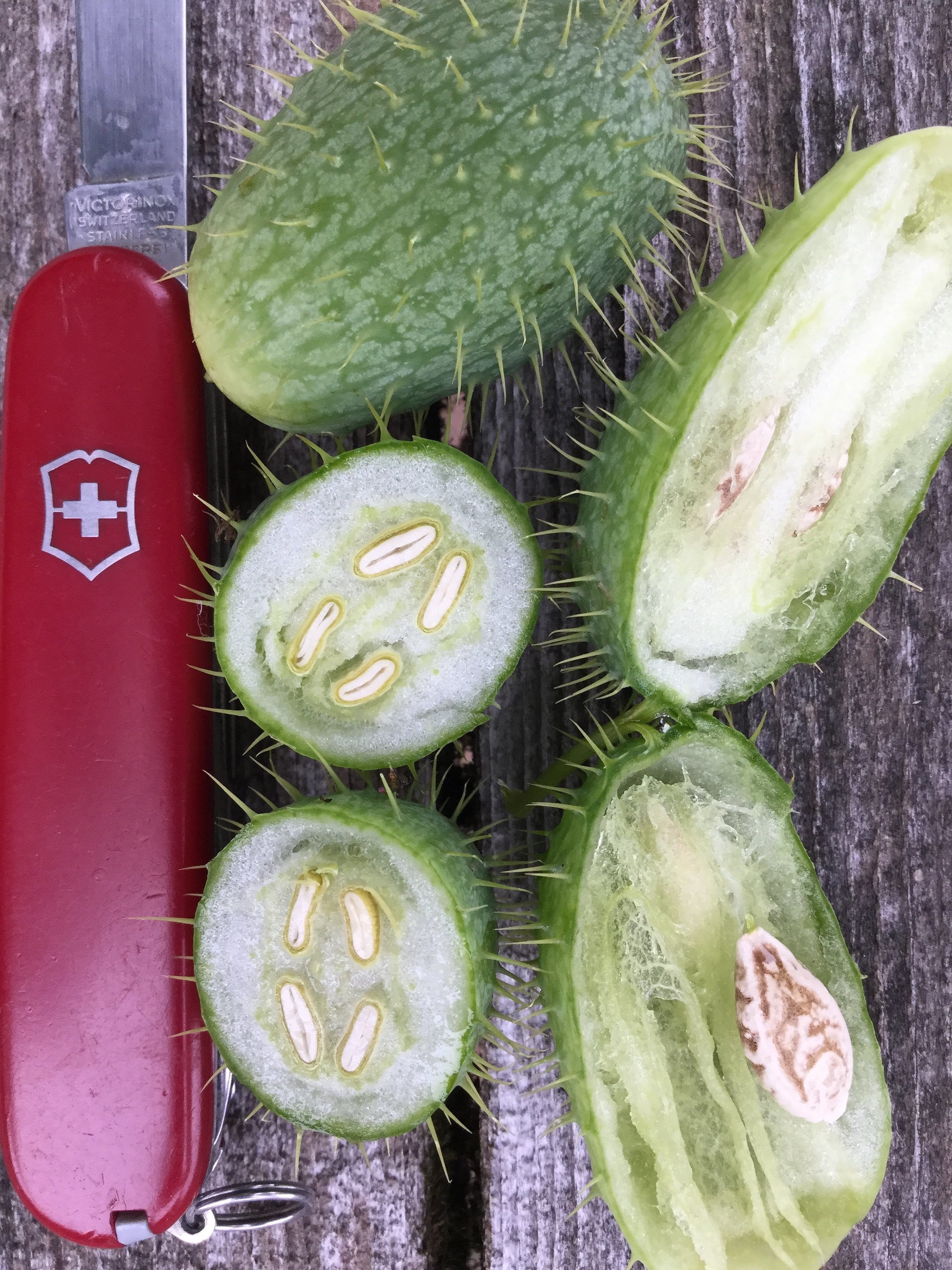
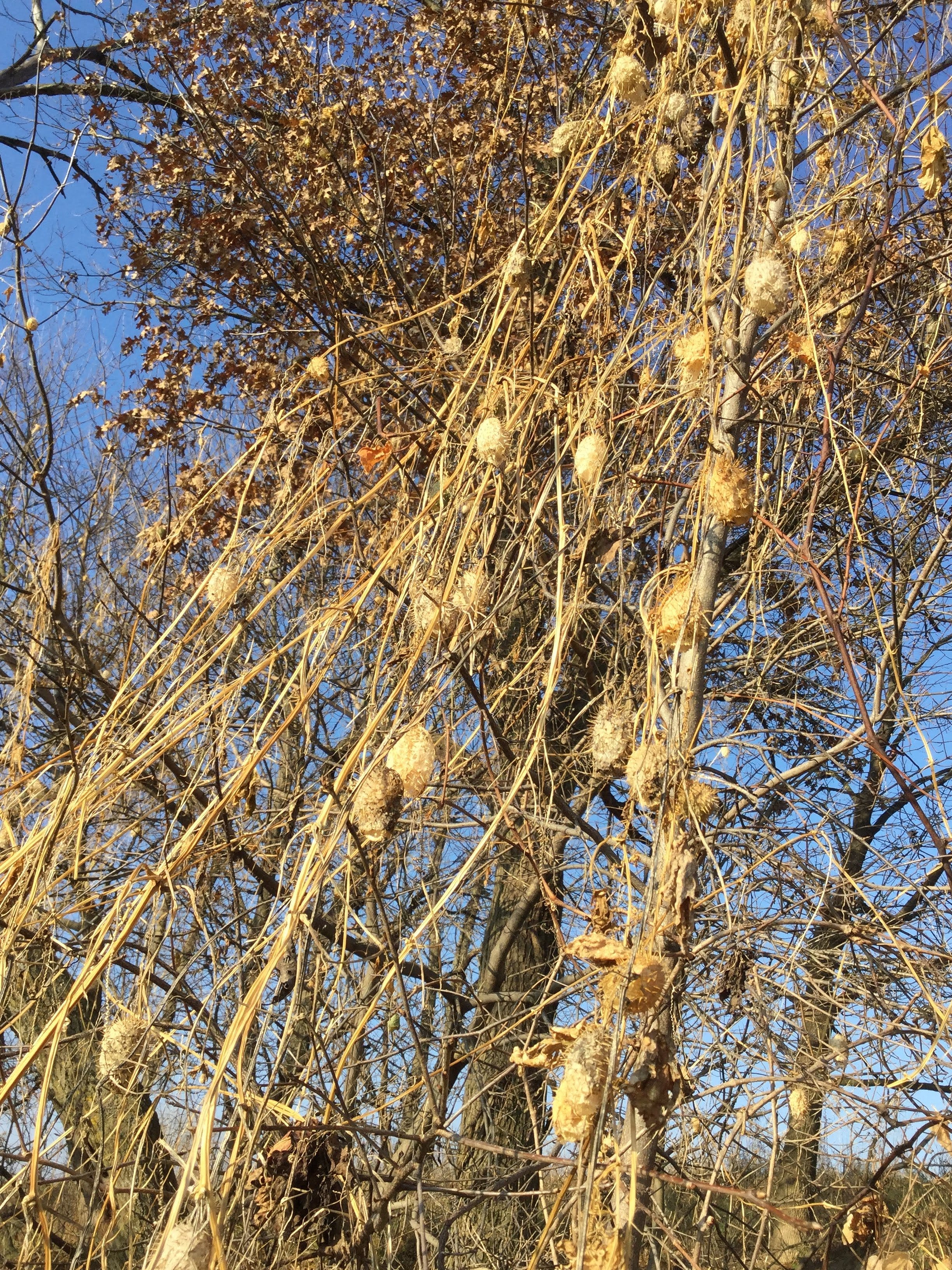
1 Comment
This is one of my favorite native wild plants
I first saw it when I found it growing close to my house soon after moving in. I’ve been trying to keep the local population going ever since. It does seem to be subject to foliar diseases sometimes, like other members of the cucumber family, and it doesn’t grow well close to my house every year. So I try to scatter the seeds in varying places
The big seeds look like giant watermelon seeds. They don’t fall out of the fruits after the fruits dry out, but slide out while the fruit is still bright green. The bottom of the green fruit splits opens suddenly one morning, and if the seeds aren’t collected quickly afterward, they slide out of the pod, coated with thin slick liquid, fall to the ground, and seem to disappear because they are mottled brown against mottled brown soil. The slick coating probably helps them slide through foliage to the ground surface.
I completely agree with Beth Lynch about the appeal of this plant. Leaves, flowers, tendrils, pods, it’s all beautiful and interesting. The flowers smell good, too. I’ve read a few complaints about wild cucumber online because it is such an enthused climber when it’s doing well. But it would be much easier to tear down wild cucumber vines than woody vines, and it doesn’t harm the plants it climbs on like many invasive exotic vines do. (Asian bittersweet, I’m looking at you.)
As a final appealing feature, the dried fruits of wild cucumber in autumn look like lacy pantaloons. If I had known about this plant as a child, I would have been fascinated and wanted it to grow all over our backyard. Come to think of it, I feel that way now:-).
PrairieFan Wed 14 Nov 11:08 PM
Comments are closed.